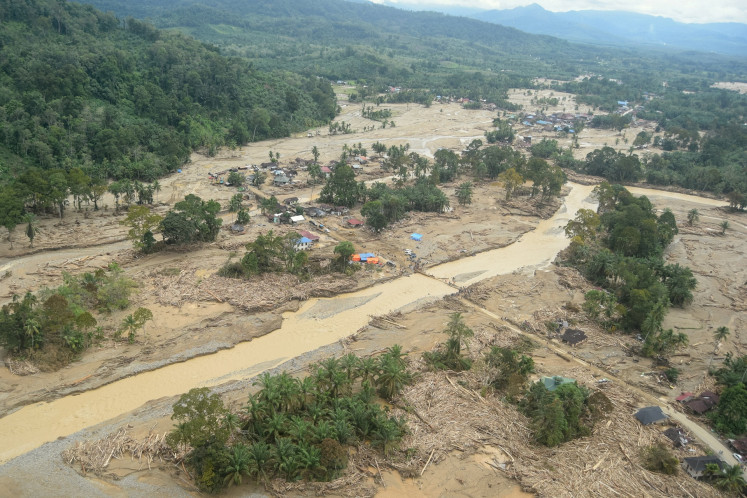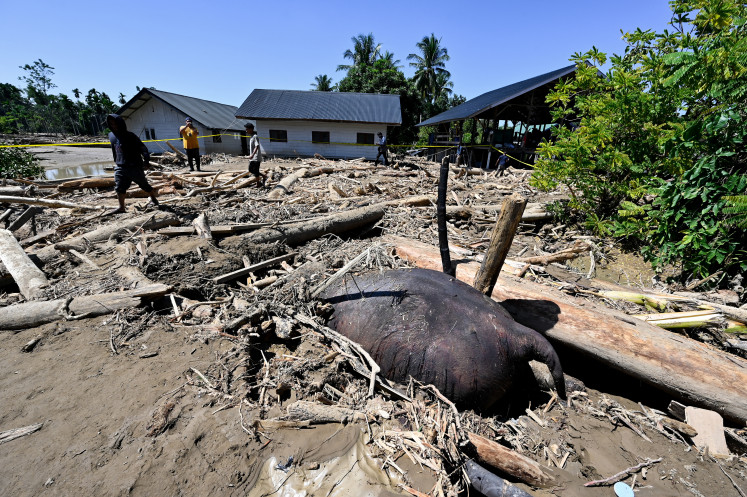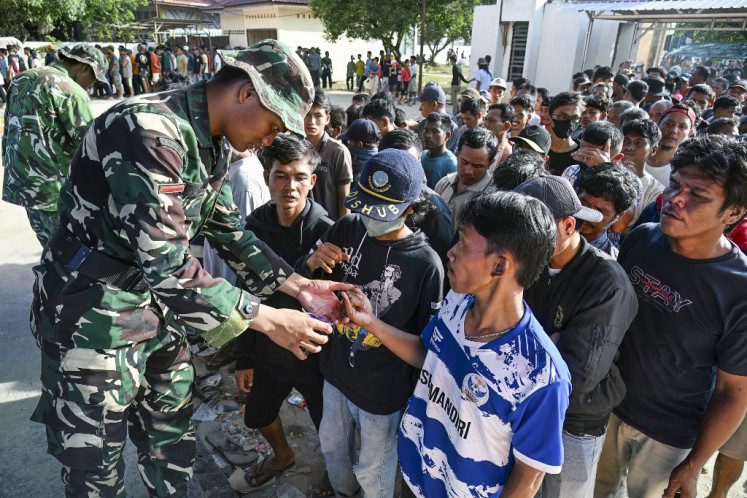Popular Reads
Top Results
Can't find what you're looking for?
View all search resultsPopular Reads
Top Results
Can't find what you're looking for?
View all search resultsOne-map policy helps resolve land disputes, overlapping permits
Indonesia has officially implemented the much-anticipated âone-map policyâ to help resolve disagreements resulting from the use of different data and maps that often cause land disputes and overlapping permits for plantation and mining operations
Change text size
Gift Premium Articles
to Anyone
I
ndonesia has officially implemented the much-anticipated 'one-map policy' to help resolve disagreements resulting from the use of different data and maps that often cause land disputes and overlapping permits for plantation and mining operations.
The Geospatial Information Agency (BIG) officially unveiled on Monday its basic geospatial information map (IGD) for use by government agencies, alongside several thematic maps (IGT) that comprise a national land-cover map, a national sea grass/shallow waterbed map, a national maritime characteristics map (karakteristik laut nasional) and a provincial mangrove map of Sumatra.
It took three years before the government was able to effectively fulfill its mandate for implementing the one-map policy, as stipulated in Law No. 4/2011 on geospatial information.
According to agency head Priyadi Kardono, the long-awaited launch of the basic geospatial map aims to resolve the cross-sectoral disputes that have arisen from the use of different data and mapping standards.
The standard map, he said, would allow each government agency to create an overlay with its sector-specific data and integrate it into a 'single reference and database using a unified standard through a single portal'.
'This one map policy is important in that government agencies will work together instead of creating their own maps using their own distinct standards. We have thus prepared this basic map that is free to use for this purpose,' Priyadi said during the launch event in Central Jakarta, on Monday.
Priyadi said that previous attempts to adopt a single map had faltered because of the fact that it was not made free for other government agencies to use, since each sector was too caught up in its own agenda to make available data that could be utilized by others.
He said that the one-map concept was far from finished, as overlapping permits were still an issue for its implementation.
'There's still a lot to be done. We still need to consolidate the spatial plans with every single province, as even neighboring areas aren't necessarily free of conflict,' explained Priyadi, adding that there were still several more thematic maps that need to be realized.
'We've started work on the permit issues this year, but we hope to clear everything up by 2015.'
Accurate and up-to-date geospatial information is essential in helping the government draft policies, resolve land disputes and manage its assets in the regions. Early next year, the Investment Coordinating Board (BKPM) is planning to launch its under-one-roof system that integrates sector-specific licensing requests in a single service center.
Meanwhile Environment and Forestry Minister Siti Nurbaya Bakar said the one-map policy could be considered as a form of democratic governance, whether by wiping away any hint of sectoral egotism or by involving international agencies like the Nature Conservancy.
'The government needs to become the spearhead of negotiations, with the map as its instrument. We have to get rid of any sectoral egotism found on the map,' Siti said during her opening remarks, on Monday.
Siti said that it was up to BIG to become the 'clearing house' for the one-map policy, even though the map itself belonged to everyone.
She also said that such a policy needed to be free of ambiguous or complicated language, so that it could be effectively utilized by the general public.










